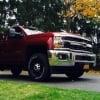Promising better fuel economy for AFM engines, the Range
-
Similar Content
-
- 1 reply
- 204 views
-
HELP! For the time being WAMS is not doing BCM programming to retro fit OEM ventilated seats!!
By Jgrazy22,
- 2 replies
- 349 views
-
- 0 replies
- 239 views
-
- 2 replies
- 4,214 views
-
- 0 replies
- 508 views
-
-
Recently Browsing 0 members
- No registered users viewing this page.
-
Forum Statistics
247.7k
Total Topics2.6m
Total Posts -
Member Statistics
-
Who's Online 2 Members, 0 Anonymous, 880 Guests (See full list)


















Recommended Posts
Archived
This topic is now archived and is closed to further replies.